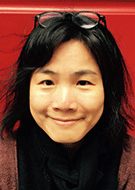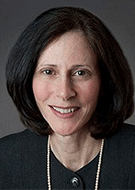Early Onset, High Stakes: Understanding the Shift in Breast Cancer Trends
Radiology takes a leading role in advocating for risk assessment of patients before age 25


Although breast cancer is usually thought of as a disease that primarily affects older patients, recent data indicates that this is no longer the case. In 2017, one-fifth of patients who died of breast cancer in the U.S. were younger than 45 years old, and breast cancer is currently the leading cause of cancer death among young women.
Breast cancer in younger patients tends to be more aggressive, said Yiming Gao, MD, associate professor in the Department of Radiology at NYU Grossman School of Medicine, New York City.
“Early onset breast cancers tend to be biologically more aggressive and are more frequently triple receptor negative or HER2 positive subtypes, which are associated with poorer survival rates,” she said.
Debra L. Monticciolo, MD, professor of radiology at the Geisel School of Medicine at Dartmouth Health, Lebanon, NH, pointed out that lower survival rates among younger patients with breast cancer are also driven by higher rates of late-stage disease, but that the reason for the overall higher incidence of breast cancer among younger patients is unknown.
“I think the cause of increased mortality is that the young patients present with more advanced disease. These patients aren’t screened, so we don’t have the same opportunities to find the disease at an earlier stage,” Dr. Monticciolo said. “As far as higher incidence rates overall, nobody really knows the answer to that.”
Screening Guidelines—Not Technology—Are Barrier to Detection
The most sensitive imaging modality for detecting breast cancer is MRI, which can be performed annually and followed by mammography at six months for younger patients at high risk.
“For younger patients who are at high risk, MRI is currently the most sensitive test for detecting breast cancer,” Dr. Gao said. “Screening MRI is usually performed annually, and often staggered with annual mammography to allow semiannual assessment. This minimizes missed cancers between screening exams. High-risk young patients, such as BRCA mutation carriers, are more prone to triple-negative breast cancers, which can grow rapidly and escape annual surveillance.”
Although current screening technologies such as mammography and MRI are very effective, they are not currently implemented for young patients with no known risk. Given that these patients make up 90% of early onset breast cancer patients, the current barrier in detecting early onset cancer is the lack of screening.
“Regardless of age, the majority of patients with breast cancer have no known family history or genetic predisposition. The same trend appears to hold for the younger patients,” Dr. Gao continued. “The primary barrier in detecting breast cancer early in younger patients is that they do not currently undergo screening; it is not related to limitations of current imaging techniques.”

Early Risk Assessment and Breast Awareness Key in Overcoming Lack of Screening
In order to overcome the barrier of lack of screening, Dr. Monticciolo indicated that current ACR recommendations advise breast cancer risk assessments for all patients by age 25.
“The most recent recommendation from the ACR is that all women have a risk assessment by age 25. That's because we're hoping to identify those with higher than average risk early enough to offer them supplemental screening, should it be needed,” she said.
Dr. Monticciolo also noted that certain cohorts, such as Black women and Ashkenazi Jewish women, are at higher risk, and any risk assessment should take that into consideration.
“It is obvious that Black women are a high-risk group because they have a higher incidence of genetic BRCA1 and BRCA2 mutations,” she said. “They have twice the incidence of triple-negative disease, and they get breast cancers younger than non-Hispanic white women.”
Dr. Gao added that patient education and breast awareness—an awareness of the normal appearance and feel of one’s breasts and being attuned to noticing a change or potential problem with one’s breasts—can be helpful tools for the detection of early onset breast cancer.
“For younger patients before the age of recommended screening, early education and breast awareness are essential in cancer detection,” Dr. Gao said.
Emphasizing Benefits of Screening Over Risks
As the medical field adapts to the new reality of a higher incidence of early onset breast cancer, Dr. Monticciolo explained that there has been resistance to being responsive to new data. This resistance is often in the form of dissuading screening of younger patients due to potential risks.
“As a result of screening, patients might get recalled for extra imaging; a biopsy might be recommended, which is almost always done with a needle and is minimally invasive; this often is associated with anxiety; and there is a chance of overdiagnosis, albeit minimal in younger women. Those are the risks. They're all non-lethal,” Dr. Monticciolo said. “Comparing them to a woman having an advanced breast cancer that will lead to her death, is an apples-to-oranges comparison.”
In a recent Radiology study, Dr. Monticciolo and her team found that for women 40 to 79 years old, breast tomosynthesis and annual screening resulted in a recall risk of 6.5% and a benign biopsy risk of less than 1%, suggesting that these risks are low.
Dr. Monticciolo added that radiology has a responsibility to educate primary care providers and patients about the benefits of breast cancer screening for younger patients who present with concerns.
“The more we can support our primary care providers with accurate data to assure them that screening is the right thing to do for the patient, the more everyone's going to benefit,”
Dr. Monticciolo concluded. “I think our role is in promoting this life saving technology and helping educate both patients and providers.”
For More Information
Read the Radiology study, “Outcomes of Breast Cancer Screening Strategies Based on Cancer Intervention and Surveillance Modeling Network Estimates.”
RSNA Statement on Screening for BreastCancer Includes Information On Younger Patients
Cancers in younger patients tend to be more aggressive and faster growing than those diagnosed in older individuals. It is important to begin annual screening mammography at age 40 to detect cancers early and produce the best patient outcomes with the fewest long term side effects. Starting annual screening at age 40 saves the most lives.
Recent American College of Radiology (ACR) breast cancer screening guidelines have recognized that Black and Ashkenazi Jewish women are at high risk for the disease and should be screened as such. It is recommended that all women —particularly Black and Ashkenazi Jewish women—have risk assessment by age 25 to determine if screening earlier than age 40 is needed. Annual screening starting at age 40 is recommended for women of average risk, but earlier and more intensive screening is recommended for high-risk patients.
The United States Preventive Services Task Force (USPSTF) recommends biennial screening mammography for women ages 40 to 74 years.
RSNA supports ACR and Society of Breast Imaging (SBI) recommendations of annual screening beginning at age 40.